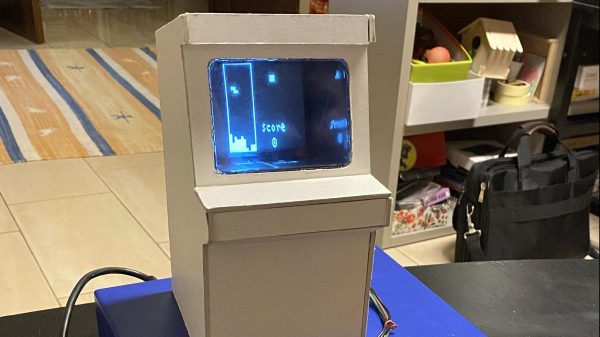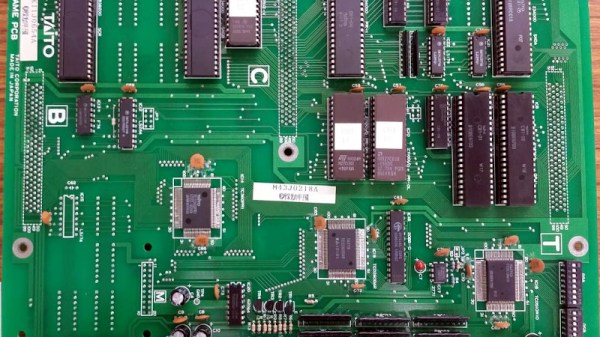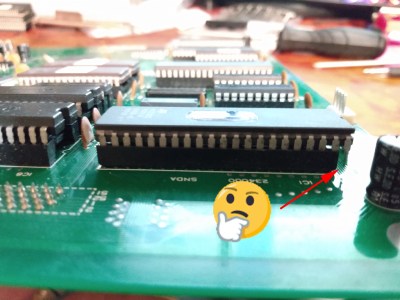Recycling old CRTs is a true Hackaday tradition, and [Rob’s] mini arcade is sure to grab your attention.
First of all, you’ll probably appreciate [Rob] circumventing the supply shortage by getting all his components from recycled material. That’s probably the only way to get anything these days. He salvaged a small CRT from an old-school video intercom system and snagged the buttons, speakers, and switches from other unused devices laying around. Not all is lost, however, as [Rob] was able to purchase an Arduino Nano and a few resistors online. So maybe things are turning around in that category, who knows?
You’ll probably also appreciate how remarkably simple this hack is. No need for a Raspberry Pi as your standard 8-bit microcontroller will do the trick. And, fortunately, [Rob] found a nice library to help him generate the composite video signal, doing most of the work for him. All that was left to do was to build the arcade cabinet. Recreating the classic design was a pretty easy step, but you might opt for something a little nicer than cardboard though. But, hey, if it does the trick, then why not?
Cool project, [Rob]! We’re definitely happy to add this project to our retro collection here at Hackaday.
Continue reading “TVout Library Brings Cardboard Arcade To Life”



 We might expect that the tool of choice would be a logic analyser or similar, but unexpectedly the solution to this hack was found in MAME. The arcade emulator conceals a wealth of information about these boards, from which you can discover their differences and try out possible solutions. The hardware hacks are surprisingly straightforward, a few bodge wires and an extra address line for a larger ROM. A programmable logic array required dumping and rewriting to fix a graphics corruption issue and a little bit of ROM tweaking after emulating a controller problem in MAME was required, but it seems that yes, one game can run on another. Certainly less painful than
We might expect that the tool of choice would be a logic analyser or similar, but unexpectedly the solution to this hack was found in MAME. The arcade emulator conceals a wealth of information about these boards, from which you can discover their differences and try out possible solutions. The hardware hacks are surprisingly straightforward, a few bodge wires and an extra address line for a larger ROM. A programmable logic array required dumping and rewriting to fix a graphics corruption issue and a little bit of ROM tweaking after emulating a controller problem in MAME was required, but it seems that yes, one game can run on another. Certainly less painful than 









